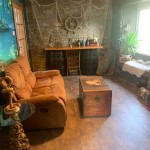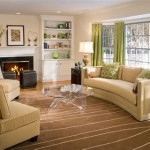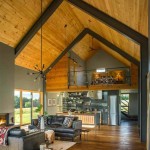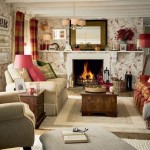Green Room Decor Aesthetic: A Guide to Bringing Nature Indoors
The green room decor aesthetic centers around incorporating verdant hues and natural elements into interior spaces. This design style seeks to emulate the tranquility and restorative qualities of the outdoors, fostering a sense of calm and connection with nature within the built environment. It is a versatile aesthetic, adaptable to various design preferences from minimalist to maximalist, and can be achieved through a range of strategies involving color palettes, materials, textures, and accessories.
The appeal of the green room decor aesthetic lies in its inherent ability to create soothing and inviting spaces. Green is psychologically associated with growth, renewal, and balance. Studies have shown that exposure to green can reduce stress, improve mood, and enhance productivity. By incorporating green into interior design, individuals can capitalize on these psychological benefits, transforming their living spaces into sanctuaries of well-being.
The implementation of a green room decor aesthetic involves careful consideration of color psychology, material selection, and spatial arrangement. Achieving a cohesive and visually appealing result requires a thoughtful approach to each element, ensuring that they harmonize to create the desired atmosphere of serenity and natural connection.
Understanding the Nuances of Green: Color Palette Selection
The foundation of any green room aesthetic lies in the selection of an appropriate color palette. Green is a diverse color family, encompassing a wide range of shades and tones, each with its own distinct character and impact. Choosing the right shades of green is crucial for setting the desired mood and achieving a cohesive design. Consider exploring the different shades of green to choose the one that suits your preference.
Light, airy greens, such as mint or sage, evoke a sense of freshness and spaciousness, making them ideal for smaller rooms or spaces where a calming and peaceful atmosphere is desired. These lighter shades reflect light effectively, visually expanding the room and creating an open and inviting feel. They work well in bedrooms, bathrooms, or home offices where relaxation and focus are paramount.
Deeper, more saturated greens, such as emerald or forest green, impart a sense of richness and sophistication. These bolder hues can add depth and drama to a space, creating a cozy and enveloping atmosphere. They are well-suited for larger rooms or spaces where a feeling of luxury and comfort is desired, such as living rooms or dining rooms. When using darker greens, it is important to balance them with lighter elements to prevent the space from feeling too heavy or oppressive.
Earthy greens, such as olive or moss green, connect the space to the natural world, promoting a sense of grounding and stability. These muted tones blend seamlessly with other natural materials, such as wood and stone, creating a harmonious and organic feel. They are versatile and can be used in a variety of spaces, from kitchens to bedrooms, adding a touch of rustic charm and understated elegance.
Complementary colors play an important role in enhancing the impact of green. Colors that sit opposite green on the color wheel, such as reds and purples, can create a striking contrast, emphasizing the vibrancy of the green. However, using these complementary colors sparingly is important to avoid overwhelming the space. Analogous colors, which are colors that sit next to green on the color wheel, such as blues and yellows, create a more harmonious and balanced effect. These colors work well together, creating a sense of flow and continuity throughout the space.
Bringing the Outdoors In: Incorporating Natural Materials and Textures
Beyond color, the green room aesthetic relies heavily on the incorporation of natural materials and textures. These elements add depth, warmth, and a sense of authenticity to the space, further enhancing the connection with nature. Integrating elements such as wood, stones, and plants will create a more organic feel to the space.
Wood is a fundamental element in creating a natural and inviting atmosphere. Its warm tones and organic grain patterns add character and texture to any space. Wood can be incorporated in various forms, from flooring and furniture to decorative accents and wall cladding. Different types of wood offer different aesthetic qualities, allowing for customization to suit individual preferences. Light-colored woods, such as birch or maple, create a bright and airy feel, while darker woods, such as walnut or mahogany, add a touch of richness and sophistication.
Stone is another natural material that can be used to create a sense of grounding and stability. Its cool, earthy tones and varied textures add visual interest and depth to the space. Stone can be used in flooring, walls, fireplaces, or as decorative accents. Natural stone, such as granite or marble, offers a luxurious and timeless aesthetic, while more rustic stones, such as slate or river rock, create a more rugged and organic feel.
Plants are arguably the most important element in the green room decor aesthetic. They bring life and vitality to the space, purifying the air and creating a sense of tranquility. Plants can be incorporated in various forms, from potted plants and hanging baskets to vertical gardens and terrariums. Different types of plants offer different aesthetic qualities and require different levels of care. Choose plants that are appropriate for the light and humidity levels of the space and that align with your personal care preferences. Consider incorporating a variety of plants with different shapes, sizes, and textures to create a visually dynamic and engaging display.
Textiles also play a crucial role in creating a comfortable and inviting space. Natural fibers, such as cotton, linen, and wool, add warmth and texture to the room. These materials are breathable and comfortable, making them ideal for upholstery, curtains, and rugs. Look for textiles with organic patterns or textures that complement the overall aesthetic of the space. Consider incorporating woven baskets, jute rugs, or linen curtains to add a touch of natural charm.
Cultivating a Sense of Calm: Furniture and Accessories
The selection of furniture and accessories is essential for completing the green room decor aesthetic. These elements should complement the overall color palette and material choices, contributing to a cohesive and harmonious design. Choosing furniture that is both aesthetically pleasing and functional is important to create a space that is both beautiful and livable.
Opt for furniture with clean lines and simple silhouettes, avoiding overly ornate or fussy designs. Natural wood furniture with a minimalist aesthetic complements the natural elements of the space. Upholstered furniture in neutral tones or shades of green can add comfort and sophistication. Consider incorporating vintage or antique pieces to add character and personality to the space.
Accessories are the finishing touches that add personality and depth to the room. Choose accessories that complement the overall aesthetic and reflect your personal style. Consider incorporating natural elements such as branches, stones, or shells into your decor. Artwork that features landscapes, botanical prints, or abstract representations of nature can further enhance the connection with the outdoors. Mirrors can be used to reflect light and create the illusion of more space, while candles and essential oil diffusers can create a calming and inviting atmosphere.
Lighting plays a crucial role in setting the mood of the space. Natural light is always preferable, so maximize the amount of natural light that enters the room. Use sheer curtains or blinds to diffuse the light and create a soft, warm glow. Supplement natural light with artificial lighting, using warm-toned bulbs to create a cozy and inviting atmosphere. Consider incorporating pendant lights, table lamps, or floor lamps to add ambient and task lighting to the space.
Ultimately, the successful implementation of a green room decor aesthetic requires a thoughtful and holistic approach. By carefully considering color palettes, materials, textures, and accessories, individuals can create spaces that are not only visually appealing but also promote a sense of well-being and connection with nature. The goal is to transform living spaces into sanctuaries of calm, where individuals can relax, recharge, and reconnect with the restorative power of the natural world.
The careful curation of each design element ensures a cohesive and inviting space. Experimentation and personalization are key to achieving a green room decor aesthetic that is both visually appealing and functionally suitable for the space and its occupants.

Small Living Room Decor In 2025 Sage Green Bedroom Makeover Walls

Aesthetic Room Sage Green Bedroom Inspiration Ideas
:max_bytes(150000):strip_icc()/316175916_1222809018307367_8651279146260536186_n-3be20a22b4164fdb83dd7137957be7e3.jpg?strip=all)
21 Aesthetic Room Ideas That Are Super Cozy

25 Sage Green Bedroom Ideas Nikki S Plate Room Decor Makeover Inspiration

Matcha Green Aesthetic Room Inspo Ide R Tidur Dekorasi

79 Soothing Green Bedroom Decor Ideas Shelterness

23 Amazing Sage Green Home Decor Ideas

25 Sage Green Bedroom Ideas Nikki S Plate

Sage Green Wall Collage Kit Pastel Boho Aesthetic Room Decor

Danish Pastel Room Decor Green Aesthetic Poster Cute Quote Wall Art Gallery Sage Prints Canvas Country Painting Living Bedroom Core No Framed







